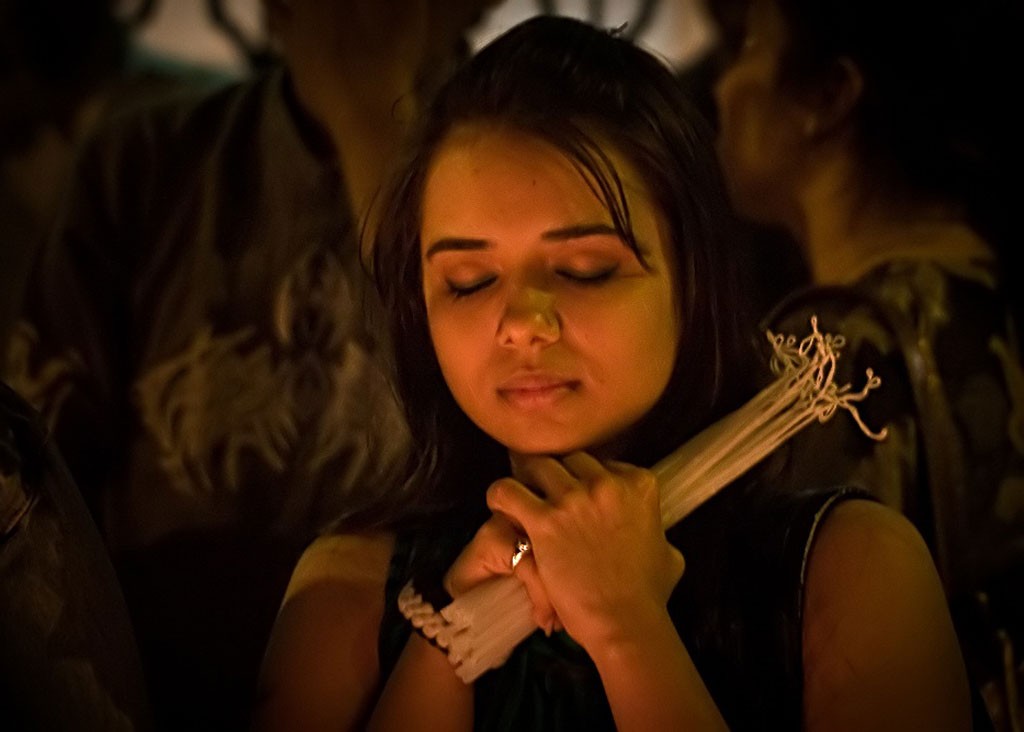The issue highlights certain religious practices that have become typically adolescent. Reflecting on the phenomenon of short-term mission trips as a particular ritual practice of young people, Laurie Occhpinti considers the connection between the intensification of religious faith and the ethics of global responsibility experienced by participants in this voluntary dislocation. Similarly, Montana Miller seeks to discover “the ostensibly unspoken views of students who participate in adult-sponsored programs” of wearing purity rings. Miller highlights the multiple meanings of this public symbol that emerge as youth take on a religious practice with the consequence of temporarily “blocking” passage into sexually mature adulthood.
The issue also attends to the diverse contexts in which young people grow up. Writing from her experience as a teacher in Dubai, Jillian Schedneck proposes the classroom as a venue for reckoning honestly with the contested ethnic and religious identities present in the lives of her students. Entering adulthood as the Islamic nature of Emirati culture appeared threatened by an influx of multicultural expatriates, her students contended with simultaneous impulses toward the preservation of tradition and openness to change. This attention to context is also significant to Rich Voelz who finds that preachers fail to seriously consider the lives and experiences of youth as they undertake their practice. He argues that preaching with youth has “largely eschewed theological rigor” for the sake of entertainment or moral influence; in response, Voelz offers homiletic reflection as a tool for understanding and shaping the theological and contextual faithfulness of sermons.
This work in homiletics highlights the importance of youth and adults in practice together, a theme present in this issue’s featured film. Sonia Narang documents the work of Siona Benjamin, an artist working with students at a Jewish high school in the Bronx to create a Torah ark based on the book of the prophet Ezekiel. In the process, Benjamin asked the students to “put themselves” into their artwork and “not just illustrate to the text.” Another significant way that youth and adults can practice together appears in Jana Strukova’s practical theological proposal for “kitchen table youth ministry.” Like Benjamin, she is interested in the ways that the lives of youth intertwine with the texts of tradition. Strukova offers a model of ministry with youth in which faith is nurtured and family is bound together through practices of hospitality and conversation about the connections between human and divine stories.
Strukova’s work, rooted in Martin Luther’s “table talks,” points to the historical dimensions of religious practice with youth. Reflecting on children’s involvement in the Great Revival in Kentucky, Ted Smith examines not only the “power of child exhorters to legitimate the revival,” but also passionate challenges to this view. His nuanced study of this moment in history and the subsequent changes in the roles of children suggests that much more can be learned from sustained exploration of the variable and contested ways in which youth practiced their religion in the past.
The richness of youth spiritual life also finds its place in the journal. In his reflection on teaching, Brian Mahan suggests that faith formation with youth should attend to the interplay between prophetic and mystical tendencies. Mahan hopes that “intellectual excellence, prophetic witness, and openness to the radical transformative power of religious experience” might come more closely together for young people. Josh Borkin’s work on after school programs considers the unlikely way in which a school computer lab can be transformed into a venue for precisely the kind of teaching that unites social analysis, emotional disclosure and communal support in a context of love and friendship. In these programs, adults are invited to “go there” with youth and join in their practice of fostering life-focusing relationships of care. Borkin challenges religious leaders to “invest in all youth” and not simply those affiliated with a leader’s particular community.
In a similar way, Rebekah Eklund encourages mentors to hold more loosely the specific agendas they as adults have for youth as they sort through an endless array of life’s seemingly urgent choices. In her work on communal discernment, Eklund invites adults to consider these youth decisions within the larger context of God’s ongoing relationships with young people. This perspective encourages youth to live their lives in relation to the story of Jesus, in which contextual particularity recedes in favor of attention to spiritual practices that help youth align their will with a God who brings redemptive flexibility to all their particular decisions.
The issue also seeks to honor the critical capacities of youth to analyze their own lives. Undergraduate student Susannah Morris shares her personal journey of theological reflection, debate, growth, and friendship, as she encounters her freshman roommate. Despite sharing a similar religious background, they wrestled with the intricacies of their faith. Morris critically explores ways their beliefs diverged as well as how their religious practice of being still together in a thunderstorm transcended these divergent beliefs.
Another undergraduate, Lucia Hulsether, explores the dimensions of race, gender, and socioeconomic class in a local congregation’s ministry with young people. Hulsether’s analysis addresses many questions raised by youth and scholars, including issues of ethical responsibility in ethnographic research: “[H]ow does one strike a balance between empathy and critique, or how does one do both simultaneously?” Her research also questions how or if researchers can offer practical theological reflection that leads to alternative ministry practices with these young people in a reciprocal manner.
In all these ways, this issue embodies a method of practical theological reflection and study of religious practices that reflects deep, though not uncritical, respect for the lives of young people. This scholarship approaches young people not simply as adults-in-process, but as persons whose lives and insights can be a revelatory source of theological and human knowledge as much as a target of strategic intervention for moral or spiritual reform by adults.
In a reflection on her time at Candler School of Theology’s Youth Theological Initiative (YTI), Natalie Stadnick laments that adults typically “do not trust young people with the words or the space that would allow their theological ponderings to make sense.” In contrast, at YTI adults trusted her to develop a religious vocabulary robust enough to articulate her faith and interpret her life. For her, this was a religious practice so powerful that her very body trembled at the “constant wrestling with questions which threatened my world’s stability.”
We hope that readers of this issue might be inspired to be equally bold in their wrestling with the past and present religious practices of youth. To scholars of religion, this issue can serve as a reminder that religious practices are not undertaken solely by adults. They are also performed in different ways by people of all ages, including children and elders as well as youth. To practical theologians, the issue offers sources of insight about youth as well as models for drawing together historical and contextual analyses into constructive proposals for renewed practice. Adults seeking to involve young people more deeply in the lives of their communities of practice will also find here recommendations for effective approaches that arise out of the issue’s overarching conviction: the many practical dimensions of young lives do, indeed, matter.
Photo by Ashish Tibrewal, 2009.
Notes
1. Lives to Offer: Accompanying Youth on their Vocational Quests (Cleveland: The Pilgrim Press, 2007), 13.






